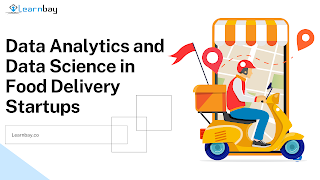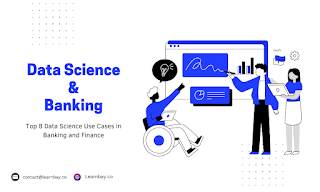Data science - Three Steps On How To Transform Your Data Into Actions
Data science is simply the process of transforming raw data into actionable insight.
One of the most common challenges data scientists and data analysts face is "How do I take my data and make decisions from it?" The simple answer is Data transformation. While there are numerous ways to explain this process, this blog describes the Data-Action cycle as a framework for transforming data into action.
What is Data transformation?
Data transformation generally refers to the process of converting data from one format/ structure to another. This process commonly involves
Gathering raw data
Transforming it into clean, useful information
Data transformation is a crucial step in every data science project. It improves the efficiency of business and analytical processes, allowing companies to make better data-driven decisions and eventually boost revenues. Data transformation technique results in generating a product, service, or solution that can be used by the client.
How do you convert data to actionable insights? - The Data transformation steps
As a data scientist, you might face the pressure to generate insights and high-quality reports.
However, the data transformation process is not a trivial task. It requires a significant amount of time, effort, and expertise in data science and the specific industry you are working in. All these steps will be covered in-depth in a data science certification course, where you will learn how to apply them in real-world data science projects.
As a data scientist, when you're working with a large dataset, it's easy to get lost in the details—and if you don't have a clear picture of what's going on in your data, it'll be hard to take action on it. So let us look at how we can transform our information into something actionable.
Here are three major steps to transforming data into action:
Data identification - Collecting the right data
To transform data into action, you first need to understand the data you're working with. You need to know what kinds of questions you can ask of this data and what kinds of answers are likely to be useful.
After determining the business objective, the initial and most important step is identifying which data can be valuable (a.k.a data collection). This can take several forms depending on what your product or service does, but it will involve finding data sources (such as reports) and gathering that information in one place.
When deciding which data to utilize, you should always have a strategic goal and a reason for analyzing your mind. It might be to improve customer experience, launch new products, and so on.
Sometimes, a corporation may use external datasets to get a comprehensive understanding of its business or market. It may purchase external data or gather data from an open community, including competitors' data. Note that the more the amount of data available to data scientists, the more accurate their subsequent analysis will be.
Data fusion - Combining it all.
Data fusion aims to identify the connections between the different datasets. Before utilizing this step, it is important to perform some data cleaning (imputation) since blank or missing values may impact the process.
This is typically an iterative technique that requires multiple passes of data fusing and data cleaning before a company can obtain unified datasets aligned with the strategic business goal. The result is a huge amount of data, including relationships between SKUs, product qualities, sales, and customer preferences, that can be mapped out to generate actionable insight.
Data-to-Action - The actual process
With the fused data layers, data scientists can now utilize statistical analysis to answer questions like "What are our customers truly concerned about right now" or "Which areas of our operations could be improved or entirely transformed?" These insights keep you informed about what's happening within and outside the leading companies.
On the contrary, several people also use machine learning techniques to find new opportunities and take action from data. As with GPS, machine learning can analyze real-time data, identify signals, and provide recommendations to data scientists so they can proceed toward their destination. Thus, Machine-learning algorithms are another effective tool for identifying relevant signals and transforming data into action.
It's plain to see that data science is one of the most in-demand and fastest-growing fields today. Even students with no experience in technical fields are getting into data science and making incredible progress in the sector. If you've been eyeing this field, the chances that you want to get started right now are pretty high, but where do you begin? You can get started with a Data science course in Bangalore, a beginner-friendly course designed to help you become a pro data scientist.
Conclusion
Data science is an interdisciplinary field that employs scientific methods and processes for generating insights from data making data transformation a critical step. Transforming raw data into actionable insight involves combining and analyzing data from all sources to get the best and optimum business decisions.
As data becomes more ubiquitous, many people are discussing the chance to "harness the power of data”. More and more businesses now realize the importance of data science in achieving their long-term goals. Companies will have to determine what data they require, clean and combine the datasets, and perform statistical analysis to uncover the underlying, interconnected information included in their corporate data.
.png)



Comments
Post a Comment